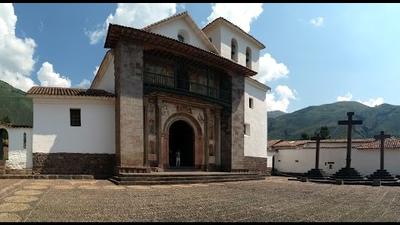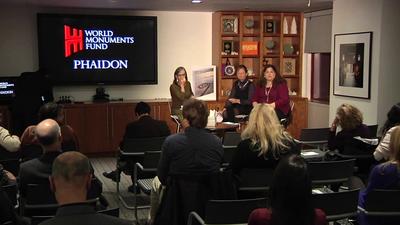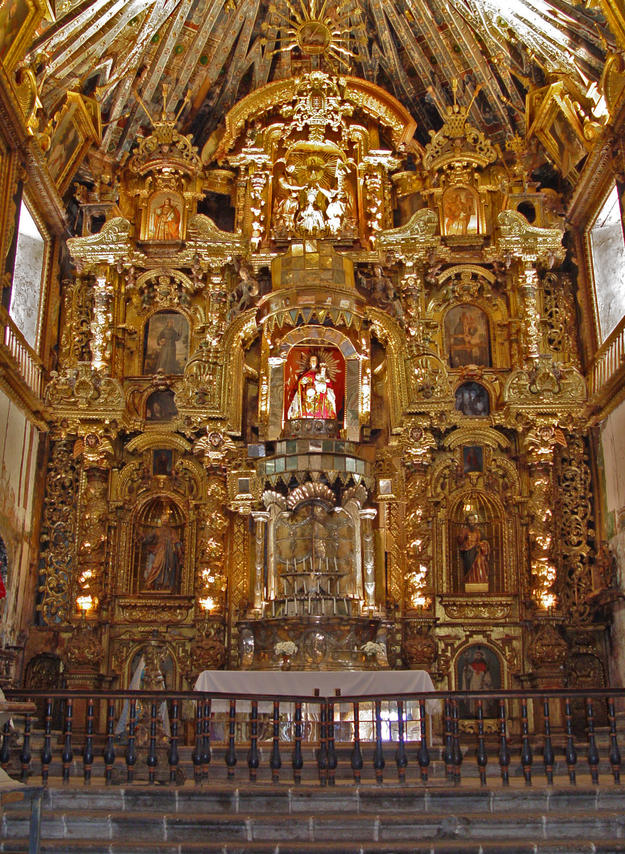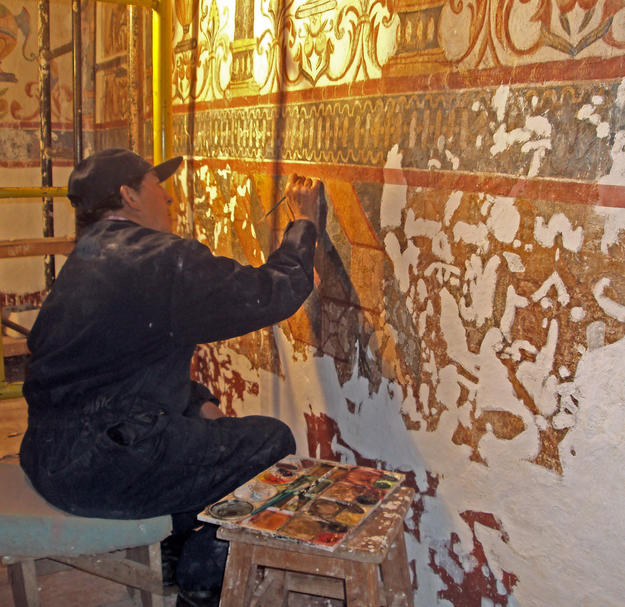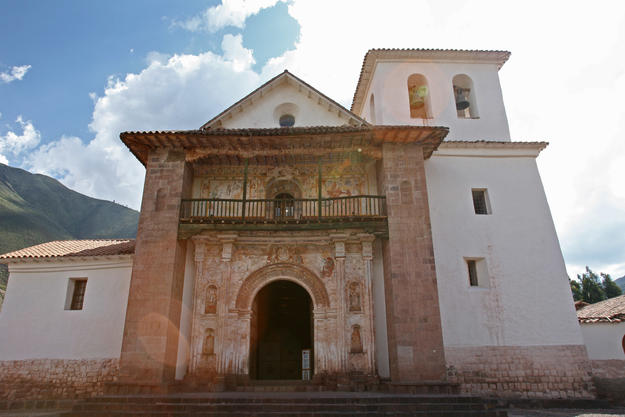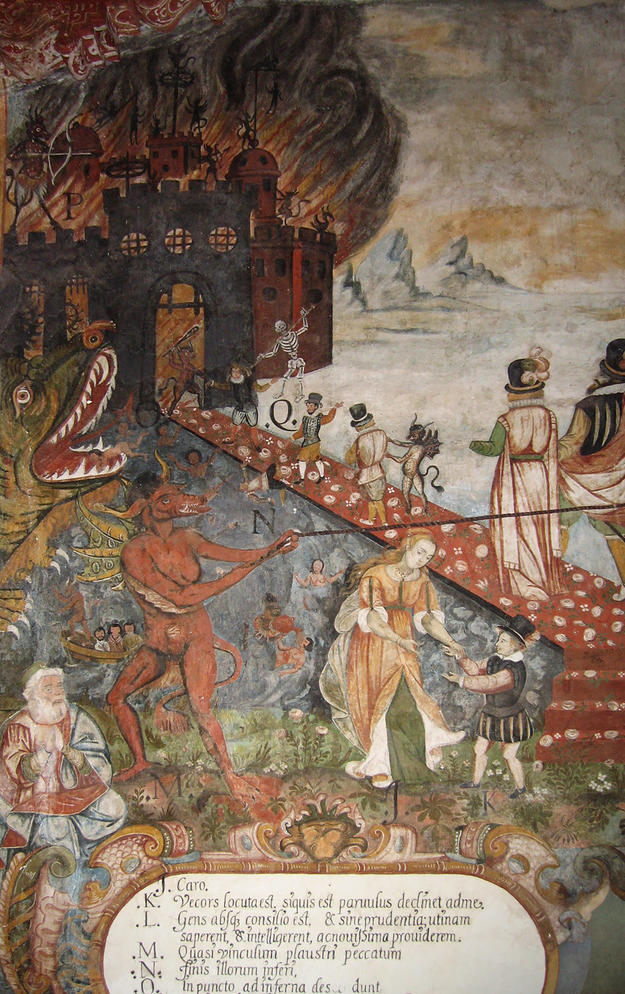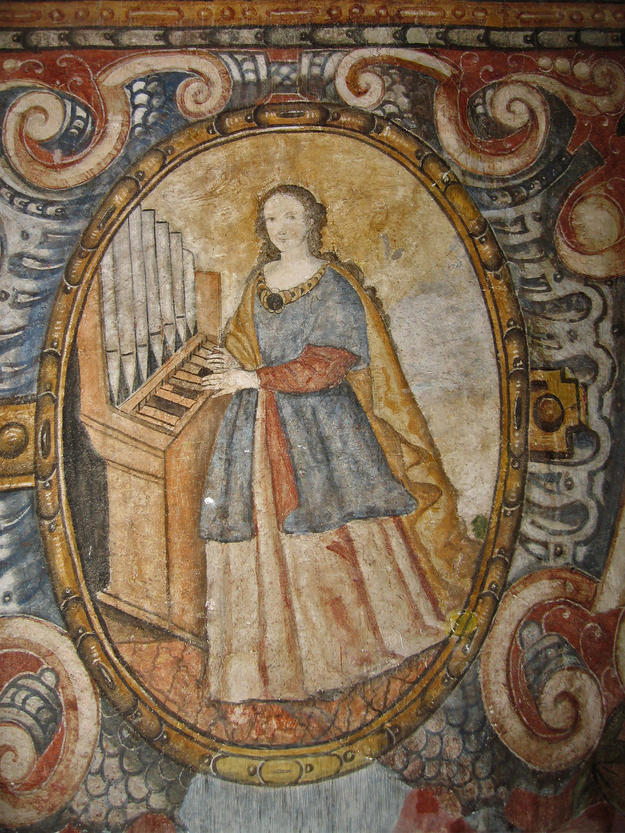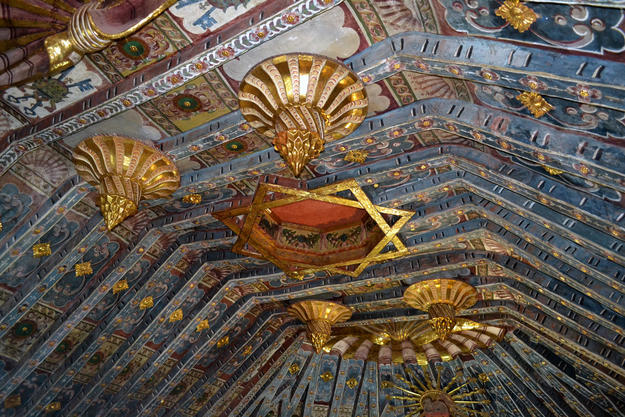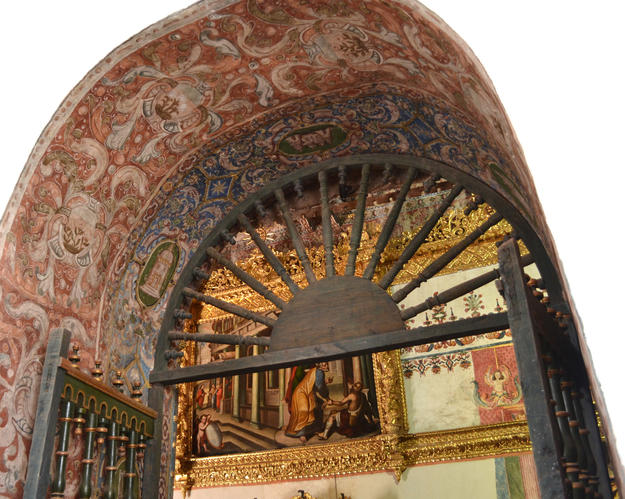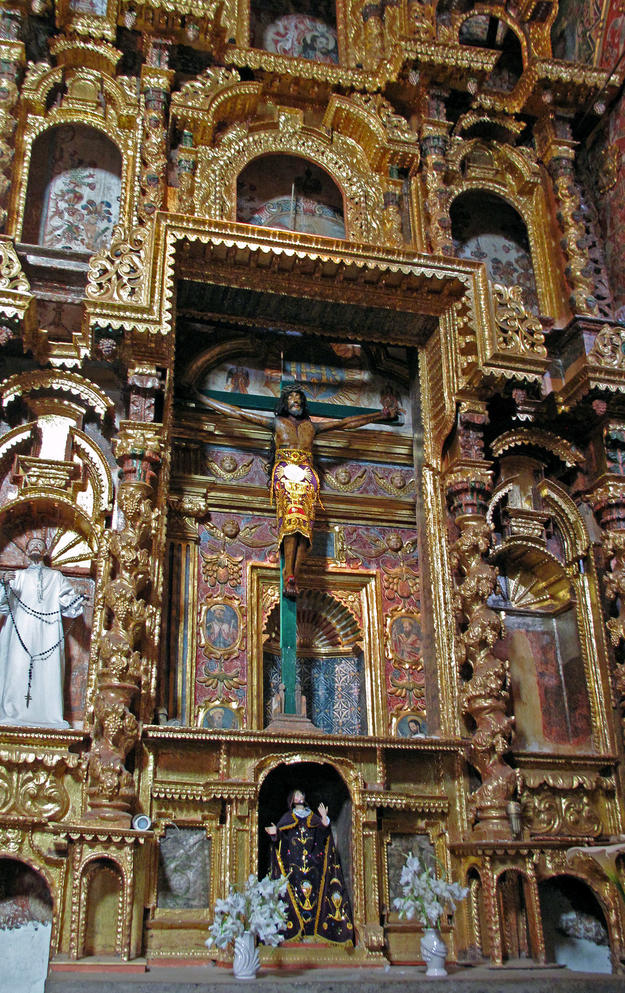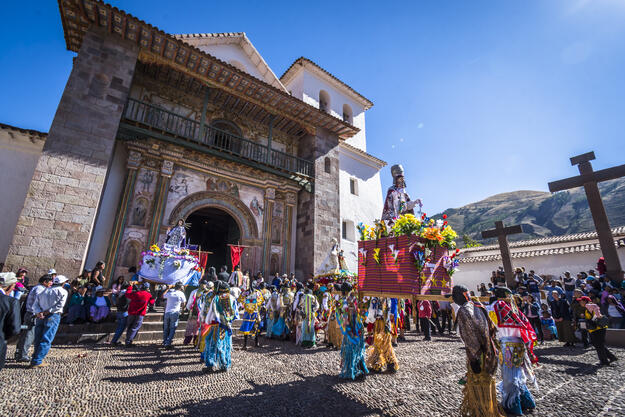San Pedro Apóstol de Andahuaylillas Church
The Sistine Chapel of the Andes
San Pedro Apóstol was built by Jesuits in the sixteenth century over a pre-Columbian huaca, or ceremonial space. The construction of the current temple started in 1570 with the creation of a small chapel corresponding to the existing apse and sanctuary; the nave and façade were completed in 1606. Much of the interior was decorated by Luis de Riaño, a student of Angelino Medoro, in the 1620s. It is often called the "Sistine Chapel of the Andes" because of the beauty of its mural paintings. The sanctuary has a polychrome ceiling in the Mudéjar style built using a pre-Hispanic construction method called kur-kur, which combines cane, straw, and mud instead of wood.
Andahuaylillas is a small town located 25 miles (41 kilometers) from the city of Cusco, at 10,000 feet (3,100 meters) above sea level. Its 6,000 inhabitants are mainly involved in agriculture and cattle-raising, although in the past few years the town has seen an increase in tourism and the migration younger people to larger cities looking for job opportunities. The function of San Pedro Apóstol is mainly religious, although the parish also supports social programs and economic development initiatives.
2008 World Monuments Watch
Repeated seismic activity and some inappropriate previous interventions caused structural instability of the façade, balcony, and bell tower. The Mudéjar-style painted ceiling of the sanctuary was also in precarious condition due to roof leaks, insect infestation, and the effect of earthquakes. Work was done on the ceiling in the 1980s, but the problems persisted, and another earthquake could cause the loss of decorative elements.
San Pedro Apóstol was included on the 2008 World Monuments Watch, as an important historic and artistic resource for the region, and the cultural and religious center of Andahuaylillas. It is important to preserve the monument within its context. Obtaining legal protection for the preservation of the historic town and raising public awareness about the need to conserve this heritage are essential.
Between 2008 and 2011 and with the support of the Robert W. Wilson Challenge program, the Selz, Annenberg, and Buttler foundations, REPSOL, ENDESA, the Peru-France Countervalue Fund, the Ministry of Culture, the Backus Foundation, the Andahuaylillas Parish, the SEMPA Association and CCAIJO, WMF provided funds to develop and implement a comprehensive conservation plan for the church. The plan included the restoration of the choir, main façade, chapels, sanctuary artesonado ceiling, altars, mural paintings, paintings on canvas, and religious statuary. The project also included the cataloguing of artistic objects, the installation of an alarm system, and the implementation of a public information program titled “Abierto por Obras” (Open for Restoration). The WMF project team, the Parish of Andahuaylillas, and the National Institute of Culture (now Ministry of Culture) collaborated on the landmark designation for the historic town of Andahuaylillas, which was achieved in 2010.
In 2009, a three-year youth heritage program was launched, aimed at promoting interest among the local youth, encouraging them to explore the works of their ancestors and providing them with the skills and opportunities to enable them to become actively involved in the protection, interpretation, and promotion of their cultural heritage. After the completion of their training program in 2012, the group formed a non-for-profit association called “Grupo Patrimonio Qoriorqo,” and worked on the documentation of local traditions, the development of an interactive map of Andahuaylillas, the organization of Heritage Day 2013, and the organization of a series of workshops aimed at engaging the local authorities, school teachers, students, and community leaders in the protection of the heritage of the entire province of Quispicanchi.
On October 31, 2012, members of the community, officials, and representatives of WMF, and other funders celebrated the completion of the four-year conservation and restoration project at an event in the church. Additional WMF funds were provided in 2013 to support a final phase of work, including seismic retrofitting of the choir, sanctuary arch, and tower, waterproofing for the nave roof, conservation of the rediscovered mural painting of the Immaculate Virgin, and the publication of a book about the history and restoration of the church and the town of Andahuaylillas.
World Monuments Fund's Work at San Pedro Apóstol de Andahuaylillas Church has been made possible, in part, by The Robert W. Wilson Charitable Trust; The Selz Foundation; Gregory Annenberg Weingarten, GRoW @ Annenberg; and Butler Conservation.
Videos
